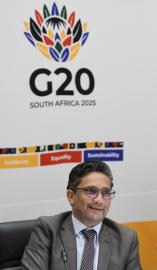by Keren Setton
JERUSALEM, Sept 8 (NNN-XINHUA) – The death toll in Israel over COVID-19, surpassed 1,000 at the weekend, and the country also has one of the highest daily infection rates, per capita, in the whole world.
On Sunday, Israel’s cabinet decided that, a list of forty cities with high infection rates will be under a uniform night curfew. Schools will be closed and only small gatherings are permitted in those cities.
The localised curfews are part of the “traffic light” plan adopted by cabinet, which intends to curb the spread of the virus with a different approach that allows areas with a lower infection rate to live with fewer restrictions. “Red cities” will be the first to have strict measures.
There were only tens of daily cases in May. The government was praised for its handling of the health crisis in the spring, and the botched economic response led to public pressure to re-open the economy. Israel re-opened with virtually no restrictions and the number of cases began to rise rapidly.
The battle against the virus hit a lot of obstacles along the way. One of the biggest challenges is the political in-fighting.
The contentious localised quarantines will see mainly in Jewish ultra-orthodox and Arab cities under curfew, raising calls of discrimination. The ultra-orthodox Jewish parties, which are part of the coalition government, consistently voted against measures that target only their communities, demanding similar treatment for other populations.
There are increasing calls for a nation-wide quarantine, while leading government and health officials say, they are taking all the steps in order to avoid this. When the pandemic broke out in Mar, the government was quick to shut down borders and impose stringent lock-down measures. The policy was lauded as a success. However, as the economic ramifications emerged and unemployment sky-rocketed, there was pressure to lift all measures.
“In the first wave, we were very decisive. In the second wave, we caved into public pressure,” said Yuval Steinitz, Israel’s Energy Minister.
The experts are divided. Some believe the localised approach is no longer a relevant tool, as the spread of the virus spans all over the country. Only about a third of newly diagnosed cases come from so called “red cities,” meaning, the majority of new cases are fanned out, making it difficult to reign in the virus.
“I don’t see how the numbers will reduce, it is likely Israel will go into lock-down,” said Cyrille Cohen, vice dean of Mina and Everard Goodman Faculty of Life Sciences, at Bar-Ilan University. “The ‘traffic light’ plan will not be fruitful, it will just serve as a Band-Aid.”
The mortality rate remained relatively low for various reasons, but this piece of good news has a negative effect on public attitude, which is largely lax. Large gatherings are held, despite forbidden regulations, and many people do not wear masks as the law mandates. This also has several experts still championing the localised approach.
“We need to find solutions on how to live with the virus while reducing morbidity,” said Prof Hagai Levine, an epidemiologist from Hebrew University and chairman of Israel Association of Public Health.
“Lock-down is only a temporary measure … but if you don’t change public behaviour, you will end up back at the same point after the closure,” Levine said.
Another major challenge Israel is facing is that, the leadership failed to rally the public, in face of the pandemic, due to the inconsistent policies and lack of personal example.
“The public needs to be told the meaning of not imposing a lock-down at this point,” said Cohen, adding, “the people have already been hurt from the first lock-down.”
“We are not seeing a change in public behaviour because of the lack of trust, and this is why we are missing the mark,” said Levine, “We still have not made the changes necessary to deal with this pandemic, but we still have time to fix this.”– NNN-XINHUA





